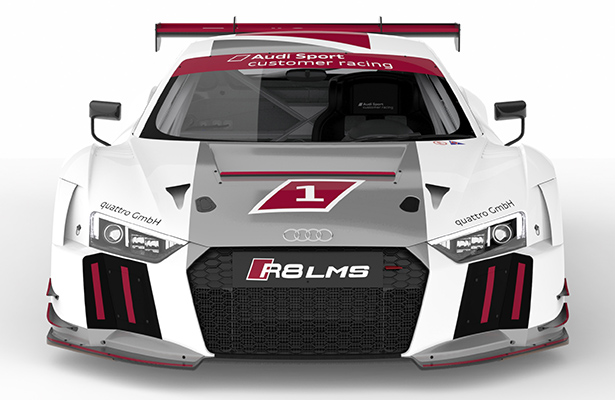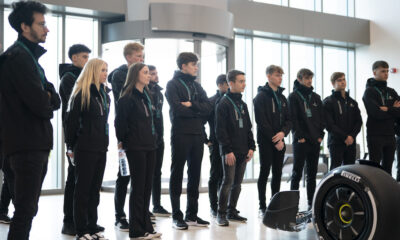
Photo: Audi
With no fewer than a half-dozen new cars on the horizon in the next six to eight months, an arms race has developed within the GT3 world, as manufacturers aim to capitalize on new markets and increased demand for the ever-popular platform.
It includes Audi, arguably the trailblazer of the original GT3 era, with more than 130 of its R8 LMS cars having been sold to customers and racking up nearly 30 championship titles worldwide since its launch in 2009.
The German automaker rolls out its all-new R8 LMS this year, featuring a number of crucial developments from its predecessor, as it looks to continue its reign as the most successful GT3 manufacturer.
According to Romolo Liebchen, Head of Audi Sport customer racing, work on the all-new car began nearly two-and-a-half years ago, which a close collaboration between the production and motorsports divisions.
“The car is completely new,” Liebchen said. “In every detail the car was improved. If you drive the road car, you immediately feel the difference to the old one.
“I think it’s very similar with the race car. It’s a step into the next generation. You see in every detail that things have improved.”
One of the major differences was in the chassis itself, which was constructed with a mixture of carbon and aluminum materials to offer a lighter and more rigid approach.
It’s resulted in a 30 kg weight savings and 39 percent increase in chassis stiffness over the previous-generation model.
The new R8 LMS features an all-new aero package as well, in order to meet increased top speeds and efficiency outlined in the FIA’s new performance targets for the platform.
Liebchen said the new R8 LMS spent seven sessions in a model wind tunnel to define the new aero package, which produces less downforce and improved drag.
“[The car] looks quite aggressive and I’ve already been asked by a lot of people that it’s much different than the old and it looks like a DTM car,” he said.
“I think it’s state-of-the-art in aerodynamics, and with the targets you have to fulfill, this is our solution to bring the car in a competitive level without any disadvantages we had in the past.”
On the engine front, Audi has opted for the same 5.2-liter normally aspirated V10 powerplant, which has undergone further developments in parallel to its production car lineup.
“I think that’s the best story we have,” Liebchen said. “We cannot do it better for the customers. The running costs are quite good with this solution.
“For the competition, it’s really hard to beat the running costs of our engines. It’s strong enough for racing. It’s reliable and the mileage is good. This is something I like a lot.”
The new R8 LMS has also takes a step forward in safety, with as the addition of an optional rear crash structure, which mets the crash test requirements for a LMP1 car, as well as a roof-mounted driver escape hatch.
Other improvements in areas such as traction control, weight balance, and tire size has seen improved drivability, a key factor for gentlemen drivers, which has been one of Audi’s main focus points.
Liebchen admits the aggressive styling design of the car wasn’t necessarily just for pure performance, but also to help drive sales.
“I think a very important point is the look of the car,” he said. “If you want to sell a race car, it has to look like a race car.
“The more it looks like a race car, potential race cars feel this car is attractive.
“There are a lot of points which can influence the decision to buy a car. If you make the car more conservative, it’s not so sexy.”
But there’s also been an eye towards future-proofing the car as well, in order for it to be easily adapted no matter how Balance of Performance evolves.
“If you build a customer car, we don’t want to make an evolution every year,” Liebchen said. “I hope we can stay with this car for the next years.
“The potential of the car should be good enough to do some adjustments in what’s required by the race series but not create a new aero package or engine, or [other] things that cost money.”
The new R8 LMS has already gotten off to a promising start, with Audi Sport Team WRT achieving a dominant victory in the car’s 24-hour race debut at the Nürburgring earlier this month.
While it’s unclear if the car will ultimately achieve the same level of success as its predecessor, in what’s become a much more saturated market, there’s no doubt the new Audi R8 LMS will be among the contenders in the new era of GT3 racing.


























